Killer Australia: Deadly Secrets And Near-Death Experiences
Beaches, barbies, and blue skies—that’s what you might be imagining when you think of the land down under. The folks of Australia are known for their laid-back attitudes—but knowing that the country has some of the deadliest critters on the planet and that every crack and cranny might be hiding a deadly killer, you’d have to be laid-back just to make it through the day.
It isn’t just sharks that you’ll need to watch out for. When it comes to terrifying Australian animals, you’re free to pick your poison—literally. From the 520 kinds of deadly creepy-crawlies to paralyzing snakes to shocking jellyfish, it’s not just an animal encounter you have to worry about, but it’s the aftermath too. Take a wild ride with us as we explore the deadly beasts of this beautiful but terrifying landmass.
The Box Jellyfish Sting
When venturing to the beach, you might have one particular fear in mind while swimming. But there’s plenty to worry about while hitting the waves. Take a look at the sting this box jellyfish delivered to a ten-year-old girl. She survived the encounter, but it was considered miraculous.
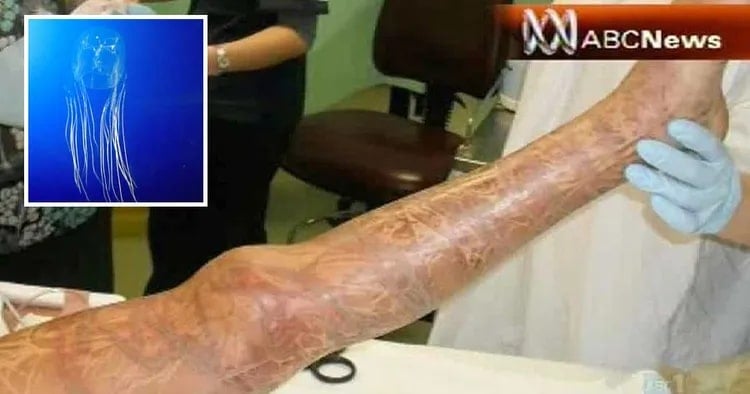
Source: Wikipedia
Almost invisible to the naked eye, especially underwater, these killers deliver one of the most painful stings in the world. They can be found near or far from land, and just one sting is enough to end a person’s life—so beware while you’re out there.
The Deadly Funnel-Web Spider
We’d be remiss if we didn’t mention any of Australia’s deadly spiders. Besides the black house spider, the mouse spider, the wolf spider, and the redback, there’s one big boy you should look out for while treading around barefoot (or with boots, it probably won’t matter).
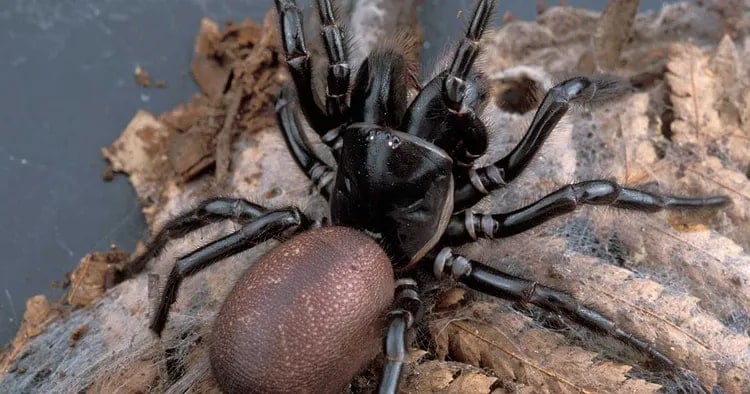
Source: Wikimedia Commons
The funnel-web spider carries a toxic venom strong enough to kill a fully grown adult. Funnel-web spiders construct webs in—you guessed it—the shape of a funnel to trap prey. Watch out if you feel your mouth or tongue twitch—worse still, if you find yourself feeling nauseous, salivating, sweating, or out of breath—you might have been bitten.
The Lurking Saltwater Croc
As some of the oldest animals on the planet, these crocodiles dominate wherever they roam—rivers, swamps, or estuaries. These things are huge and can grow more than 20 feet long. At 4,400 pounds, this monster will have no trouble dragging you underwater.

Source: Wikimedia Commons
If you stand too close to the water, you probably won’t even see it coming. It uses its tail and powerful back legs to launch out, crushing its quarry with over 66 teeth—in fact, its bite is the strongest measured on any animal alive today—so be careful when you walk by the riverside.
Killer Kangaroos
They may look adorable—even benign—but you’d be staring into the face of death if you ever got too close. These powerfully-legged animals live in mobs and are fiercely protective of female members of their mob. During mating season, males will fight each other for dominance.
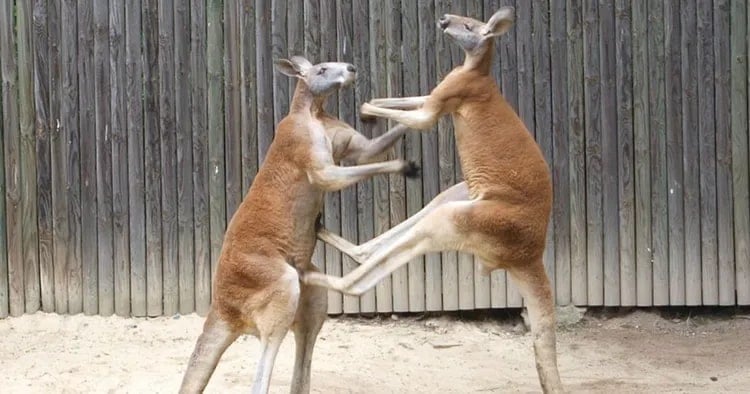
Source: Wikipedia
You’d be a fool to step in and break up the violence, as kangaroos will only see you as a threat. Female kangaroos are just as dangerous, especially while carrying their young. Get too close, and they’ll knock you down—and you shouldn’t expect to get back up.
Shot By A Snail
What could be dangerous about this odd-looking critter? Cone snails are most often found near the Indo-Pacific ocean reefs. Step too close to the cone snail, and you might find yourself heading to the hospital—or worse. Finding it difficult to see or put words together? It might already be too late.

Source: Grimwade.biochem.unimelb.edu.au
Some variants, including the conus striatus and the conus tulipa can be deadly to humans. This snail has a specially evolved tooth that shoots out like a harpoon. The sting doesn’t hurt, but the harpoon will send neurotoxins coursing through your body, preventing you from being able to see or speak effectively.
Nightmares Fuel—Giant Centipedes
It doesn’t just look horrifying—this creepy-crawler is armed with venomous claws that can sting its victims, causing pain that will last over the course of days. The intensity of this pain can vary, but it can be anything from a wasp sting to full-blown agony.
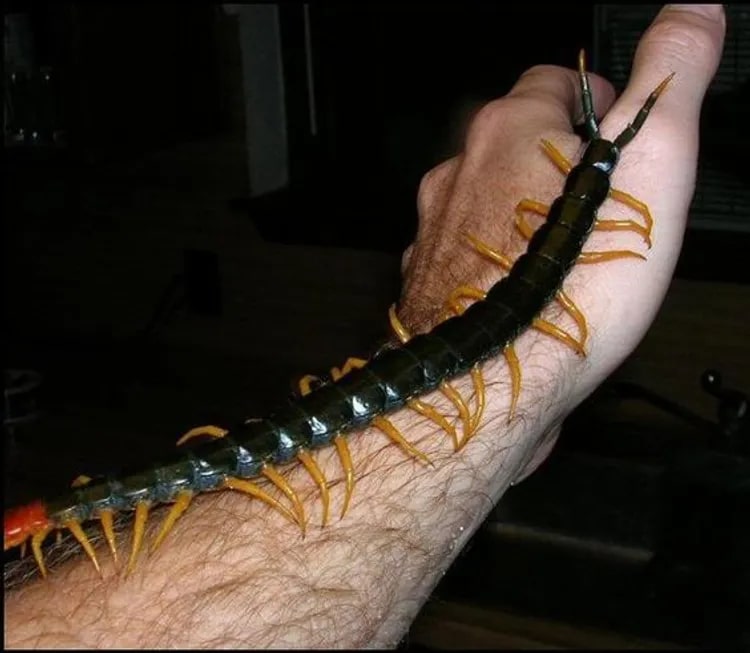
Source: Pinterest/@BlueSkyPestControl
These critters can grow just over six inches long and can get just about anywhere—meaning that nowhere is safe. Its claws are actually legs that evolved to deliver its poison. They usually only come out at night, preferring to hide in the daytime.
Creepy Coconut Crabs
If you’ve never seen one of these things before, congratulations—you now have a new phobia—giant crabs. These monsters grow large enough to compact a trash can. They’re mainly found in the Pacific Ocean on Australia’s east side.
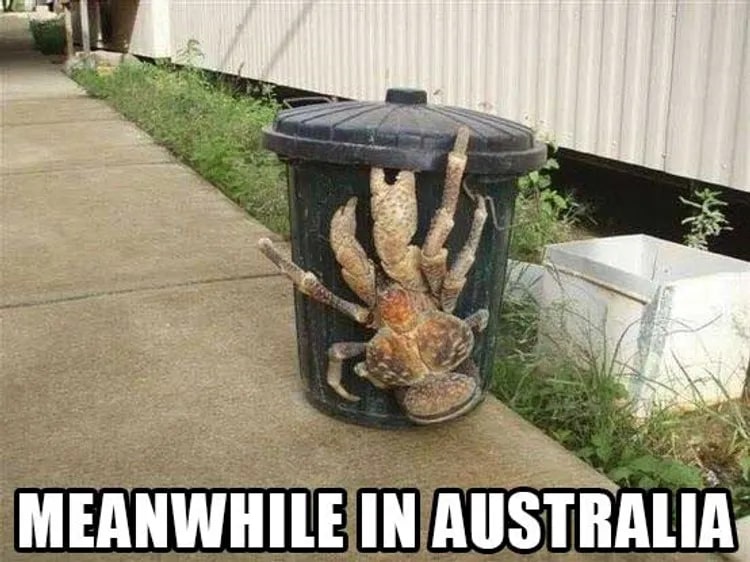
Source: Reddit
They may look lumpen and slow, but coconut crabs can climb trees and break human bones with ease. Next time you feel like hanging out under a coconut tree, check if one of these guys is hanging around up there first. In a crab battle, you wouldn’t stand a chance.
Code Red: The Redback Spider
Many of the other dangerous animals can be avoided by staying indoors or watching your step. Dealing with the redback spider is a little trickier, as it likes to live in the walls of houses, clothes, and shoes. While it usually preys on smaller insects, it attacks people, too.
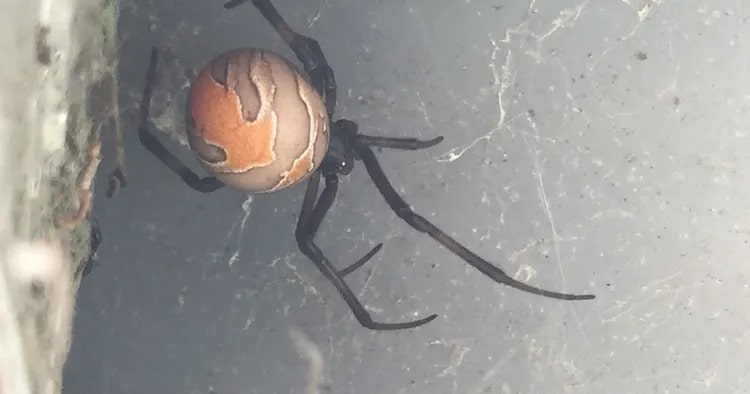
Source: Reddit/SerialPest
It’s always a good idea to keep some antivenom around just in case you’re ever bitten by one of these suckers. It goes without saying that its venom is extremely painful. Just try to avoid getting near this spider at all costs.
Croc-Eating Snakes
Crocodiles are one of the most enduring, deadliest animals out there—but there’s something even they are afraid of: the croc-eating python. These two animals have been known to duke it out. For the python, the prize is an all-you-can-eat meal that will last for several weeks.
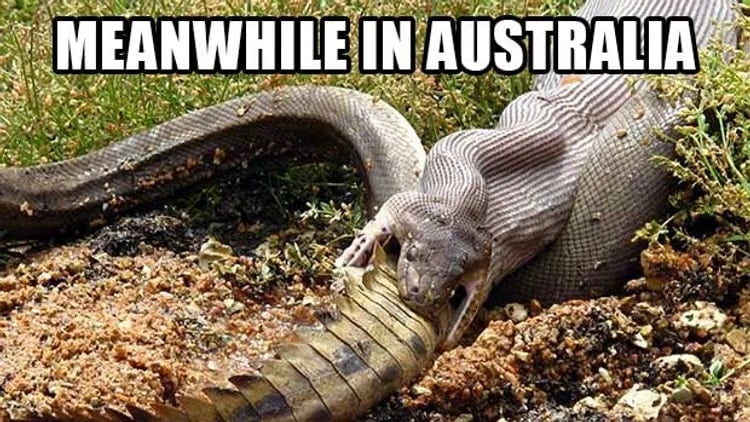
Source: ep1c.org
Snakes regularly eat 80-100% of their own body weight in a single sitting. They can sense when their prey’s heart stops, and when it does, the snake slowly engulfs the animal with its huge mouth. Everything—bones, teeth, organs, and scales—is consumed during digestion.
More Like A Case Of Worries: Cassowaries
These birds are a cross between an ostrich and a turkey, but don’t let their odd appearance fool you—you can easily lose your life facing up to one of these things. It’s known as the world’s most dangerous bird in the Guinness Book of World Records.
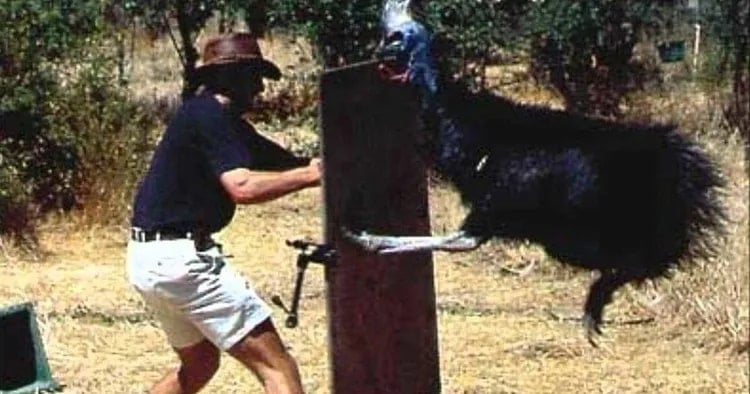
Source: YouTube/ApexViews
If you ever have the misfortune of angering a cassowary, try to protect yourself from their deadly, sharp feet. Try as you might; you’re unlikely to escape. They can run faster than 30 mph, jump up to 5 feet and swim through the strongest of currents. It’s probably better just to leave them alone.
Sneaker Snake
The red-bellied black snake is a relatively common Aussie snake that can be found in urban areas stretching from Townsville in North Queensland to Sydney in southeastern New South Wales. As you might have guessed from its name, this snake has a red belly.
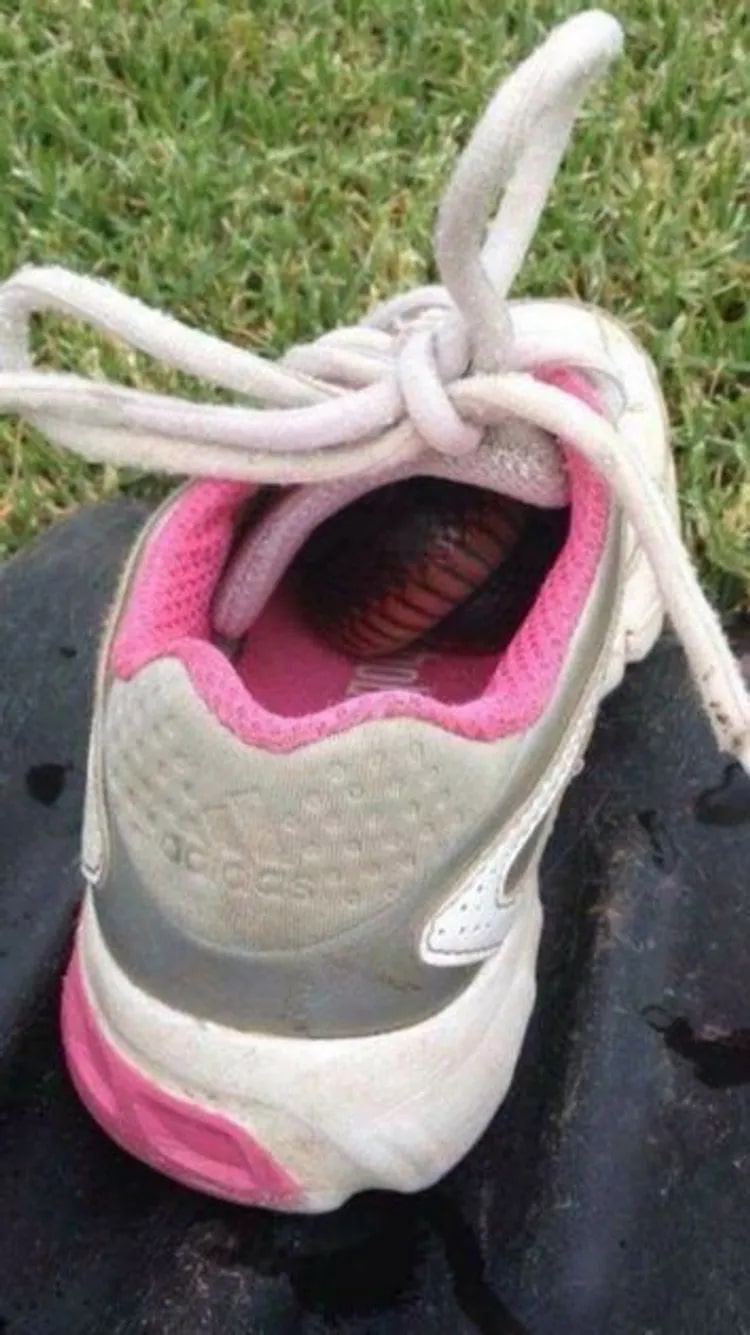
Source: Reddit/Discordant_Rhyme
It shows you its red belly if you get too close. Although the bites aren’t fatal most of the time, they require a hospital visit and will most likely involve a fair bit of pain, diarrhea, and vomiting. Unfortunately, they like to hide in shoes.
Great Whites
Great White Sharks – as anyone who has seen Jaws can attest – are terrifying. Although they’re not native to Australia, they are known to roam along the coasts from Queensland in the northeast to Western Australia in the west.
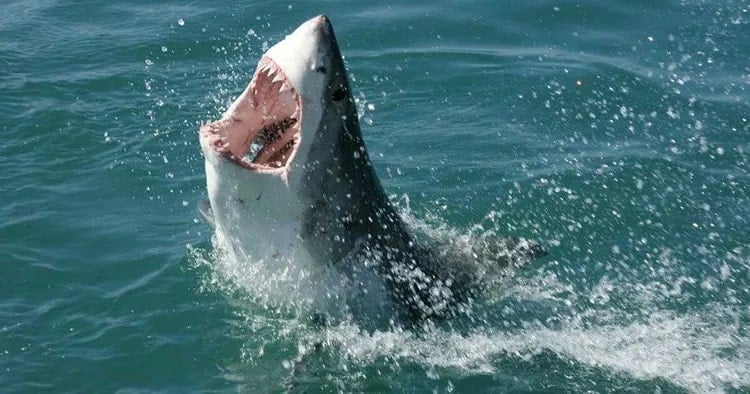
Source: mysteriousuniverse
Often, they’re on the hunt for seals and sea lions. When found, they chomp into them with 222-sharp teeth. On rare occasions, they may take a bite out of humans as well. Since they can detect electromagnetic fields, some surfers wear devices that counteract that.
Flying Fox Eaters
Inside the deadly jaws (and grip) of the python above is a flying fox. Now, a flying fox isn’t a fox with wings. Instead, it’s a kind of megabat that’s found in Australia, South Asia, and a few other places.
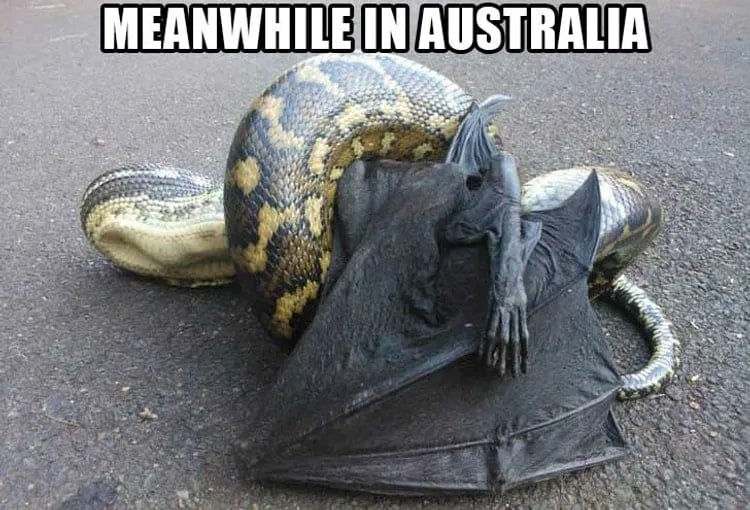
Source: Imgur
They’re considered pests because they can carry infectious diseases such as Australian bat lyssavirus and Hendra virus. The first can lead to rabies and both can be fatal. Although the above picture may look scary, many Aussies prefer that pythons keep the flying foxes in check.
Don’t Step on this Stone
The name “stonefish” may make you think this fish is nothing to worry about. Nothing could be further from the truth. The stonefish – which looks like a rock as you might have guessed – is covered in dorsal fin spines as sharp as needles.
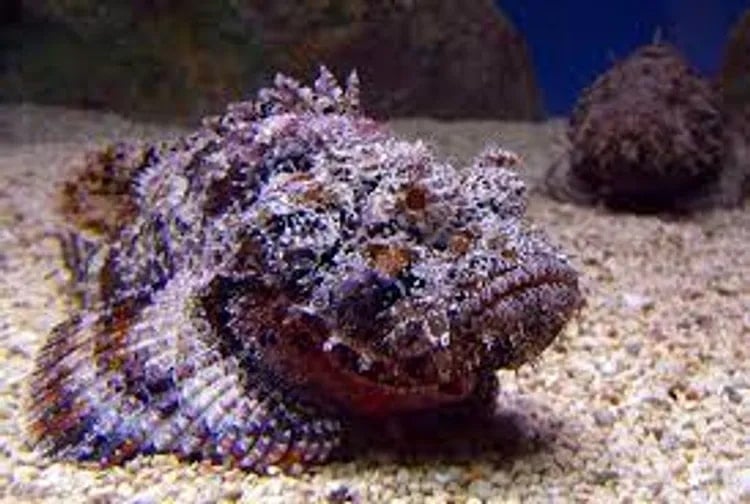
Source: fb.ru
On top of that, they’re one of the most venomous fish on earth and they’re uncomfortably common around Australia. Some unlucky swimmers step on them in the ocean and end up in a world of pain. If antivenom isn’t administered quickly enough, then they can die.
Strychnine Fruit, Bark, and Tree
It’s not only poisonous animals you have to worry about in Australia, it’s also the trees and fruit. For example, the strychnine tree produces a small orange fruit that looks relatively benign. In truth, the fruit is full of toxic seeds that can cause convulsions and even death.
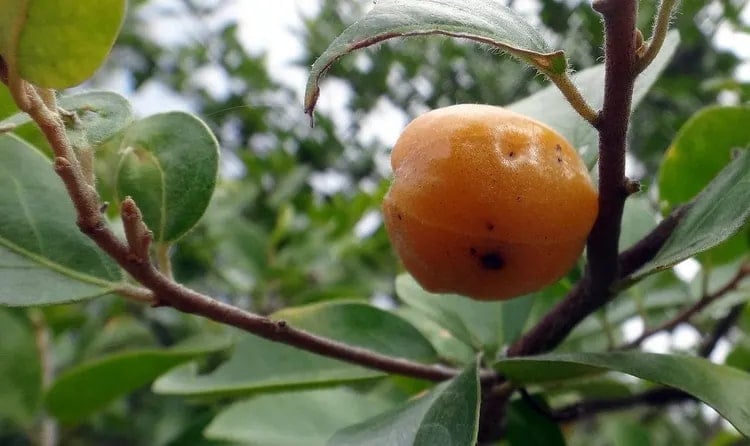
Source: Facebook
As if that’s not enough, both the bark of the tree and its blossoms are also poisonous. Everything about this tree screams out “don’t touch!” However, some people do – mostly to create a kind of arrow poison.
What the Hail Is That?
As we’ve seen above, the plant and animal life in Australia can get pretty intense and dangerous. Well, the intense danger doesn’t stop with that – Mother Nature often steps in to crank up the danger meter another few notches. For example, look at the hail below.

Source: Imgur
This was uploaded by an Imgur user back in 2013. These chunks of hail measured nearly the size of a pool ball. Considering hail is bits of ice falling from the sky, that could do some real damage if it hit you on the head.
Dingo Packs
Dingoes are a kind of wild dog that runs around the Australian outback in packs of 10 or so members. They’re fast-moving, with some reaching 6 to 12 miles a day. Although packs of wild dogs may sound dangerous, they aren’t as deadly as stonefish or great white sharks.
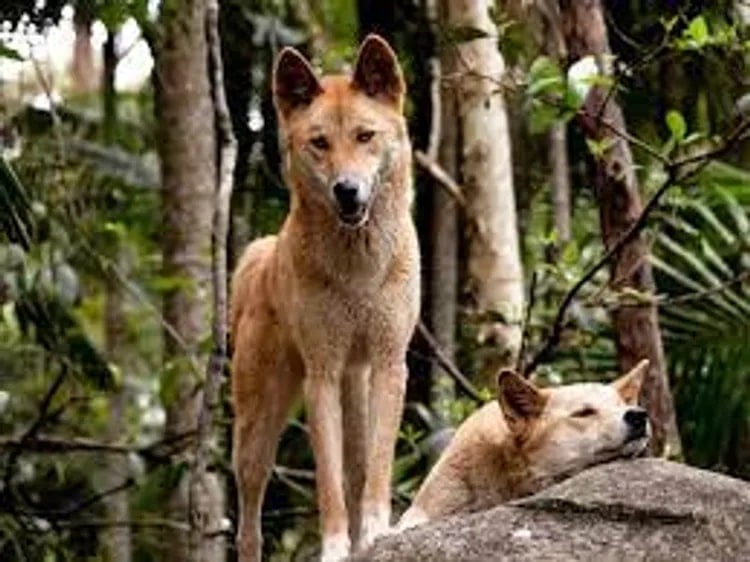
Source: divo.site
Their only real danger to humans comes when people assume they’re domesticated and try to feed them. However, they’re dangerous to livestock – which is why people in Southeast Australia built a 3,500-mile fence to keep them away.
Australian Outback
The popular steakhouse took its name from this unique part of Australia. The outback is an enormous, sprawling mass of mostly desert that makes up the interior of the country. It stretches from the north to the south and is sparsely populated – mostly by indigenous people and farmers raising sheep, cattle, and goats.
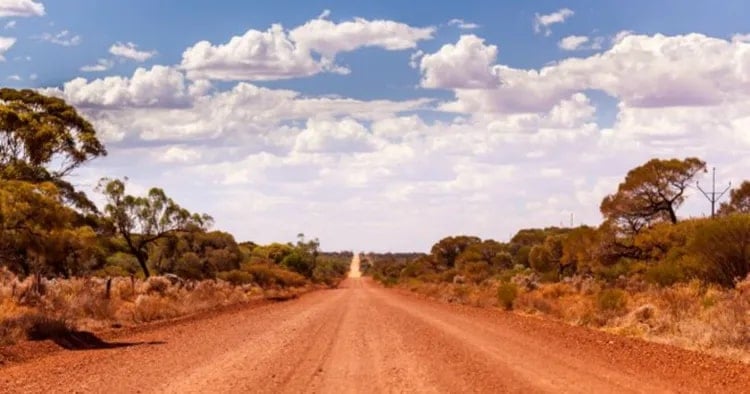
Source: kinemagazine.com
If you plan on visiting (which many people do), be sure to bring a lot of water and plenty of fuel. There are long stretches with few gas stations and even fewer people. It’s a true adventure.
Irukandji Jellyfish
Size doesn’t matter for this venomous jellyfish. Despite being only a cubic centimeter in size, the Irukandji jellyfish causes a large amount of pain if you happen to get too close. These natives of Northern Australian waters can fire out venom from their nearly invisible stingers.
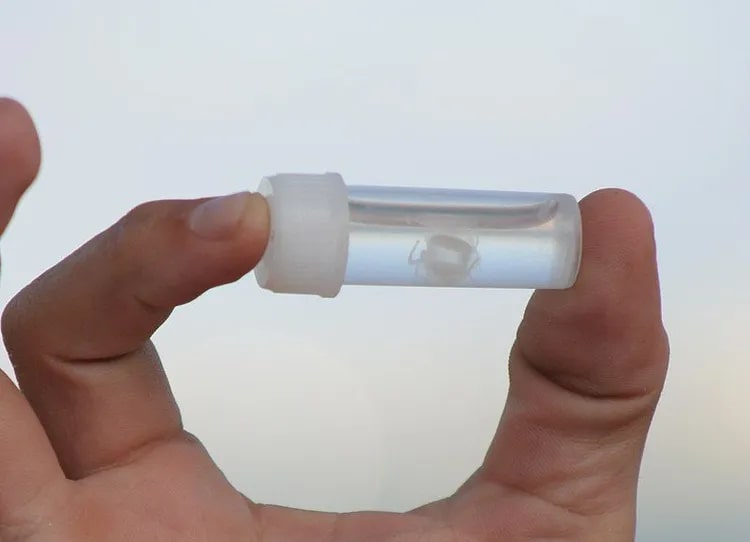
Source: Wikimedia Commons
If caught on the other side, it can leave you with painful muscle cramps, nausea, and a terrifying feeling of doom. Although not always fatal, they have been known to take a few victims. That’s why it’s best to go to the hospital.
Terrifying Koala
Koalas are typically thought to be cute but lazy creatures who sleep in trees all day. For the most part, that’s right – they’re incredibly cute and sleep up to 22 hours a day! Sometimes, however, they get angry during the two hours they’re awake.
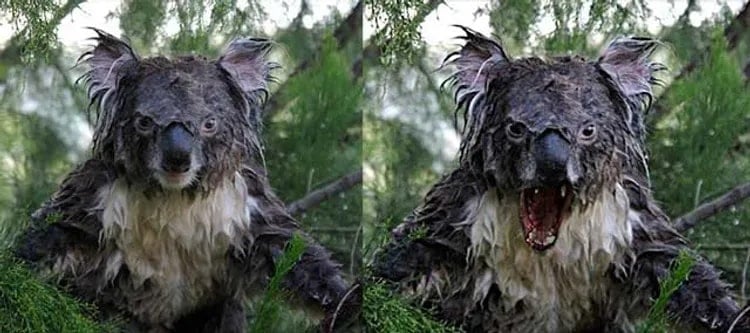
Source: Imgur
You don’t want to mess with an angry koala. Well, to be fair, this picture is a bit of a hoax. A Flickr user cooled down the koala on the left with a splash of water. Then, a clever editor photoshopped the angry face on.
Fry an Egg on the Sidewalk Kinda Hot
Heat is yet another example of Mother Nature conspiring to harm people in Australia. Summer in Australia isn’t simply uncomfortable – it’s downright dangerous! For example, some highs in the outback reach 122° F. That’s so hot that you can crack an egg on the sidewalk and watch it fry.
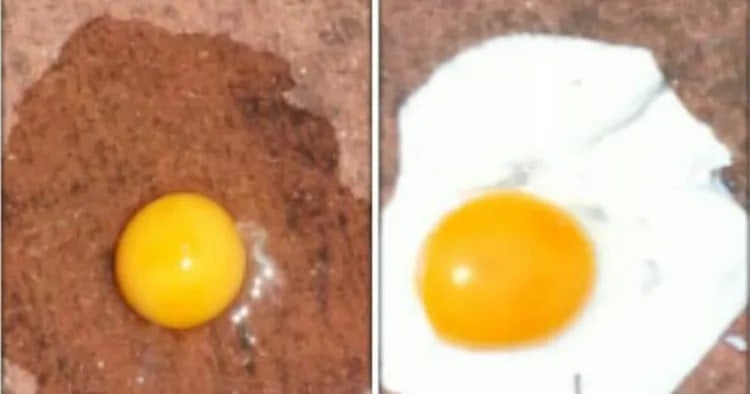
Source: Reddit
That’s helpful if you’re hungry for sidewalk fried eggs, but unhelpful for pretty much everything else. During one week in January 2009 (aka during Australian summer), Victoria health officials reported 374 heat-related deaths. Climate change is only making it worse.
Deadly Urban Snakes
Although most dangerous animals live in the rural parts of Australia, there are quite a few that prefer city life. One of the most notorious is the Eastern Brown Snake. This slithering beast is considered the second-most deadly snake on earth.
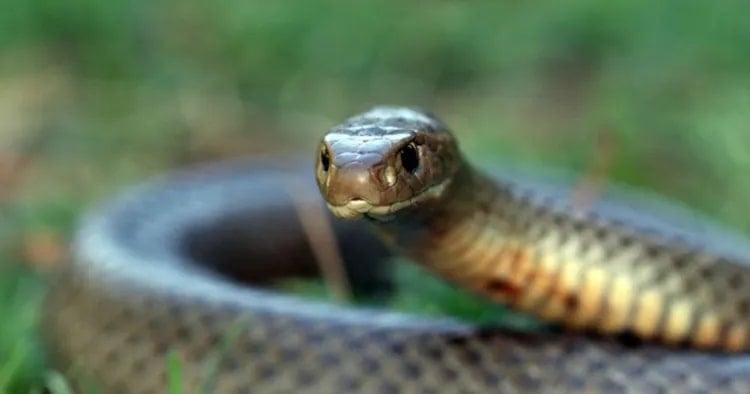
Source: Reddit
Each bite from the Eastern Brown comes packed with 2 – 6 mg of venom. Even one bite can result in heavy bleeding, cardiac arrest, and even death. They’re responsible for at least 21 deaths since 2000, so it’s important to keep your wits about you.
The Lionfish
With a name like Lionfish, it makes sense to assume these creatures aren’t to be messed with. That assumption is right. Located on Australia’s east coast, the lionfish (or pterois) are venomous marine fish. Despite that, they aren’t that dangerous to humans.
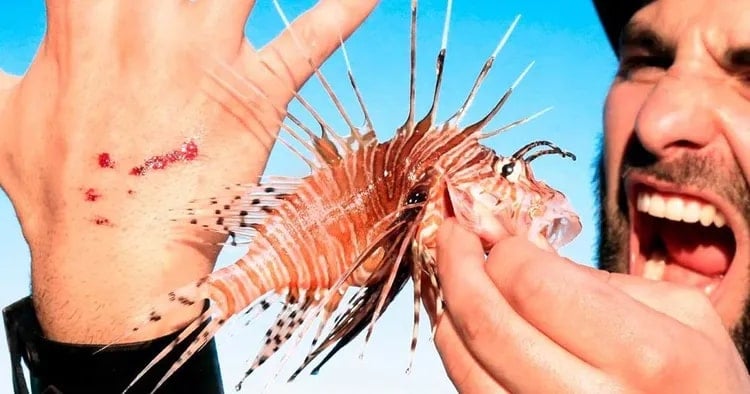
Source: YouTube/Brave Wilderness
Mostly, that’s because they aren’t too aggressive – they’ll only attack when they feel threatened. So, being non-threatening is a great way to avoid them. If you do get stung by their venomous rays, however, you’re in for a world of pain, vomiting, and occasional paralysis.
40 Foot Waves
As the world’s largest island, Australia is also one of the world’s top surfing destinations. People from all over the world come to hit the waves for fun or to win competitions such as Rip Curls Pro Bells Beach.
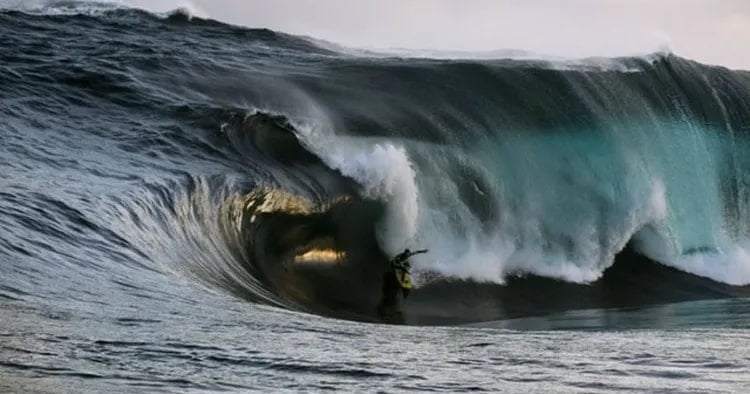
Source: thepirata
That being said, the waves aren’t for everyone – especially beginners. Some of the swells can reach up to 40 feet, so it’s important to have some experience. If the wave doesn’t get you, there’s still the danger of sharks and other marine creatures.
Rugged Rugby Players
It’s not only the plants, animals, and weather that are dangerous in Australia, it’s also the sportspeople! In particular, the rugby players. Although they don’t go out tackling random people on the streets, rugby players do regularly tackle each other, leading to all sorts of injuries.

Source: YouTube
Rugby is kind of like American football but without any of the pads that help cushion you against knees, elbows, and shins. In other words, it’s rugged, intimidating, and, often, dangerous. It’s best to never anger a rugby player.
Bees and Wasps
Although box jellyfish and eastern brown snakes get a lot of (deserved) notoriety in Australia, they don’t cause the most deaths. That dubious trophy goes to the regular old bee. Although they may seem nothing more than a nuisance, they cause a lot of hospitalizations.
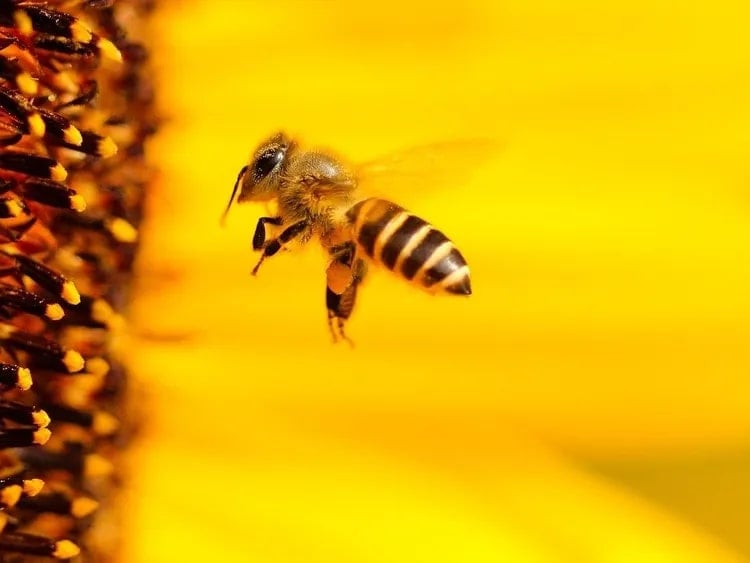
Source: hansbenn
In fact, a University of Melbourne study found that 33% of hospital visits between 2000 and 2013 were caused by bees and wasps. Sure, they’re not as deadly as sharks, but they’re far more common in day-to-day life. So, watch out!
Inland Taipans
Australia has its fair share – or unfair share depending on who you ask – of deadly snakes. These range from the relatively quiet red-bellied black snake to the more aggressive eastern brown snake. Well, there’s one more to add: the inland taipan.
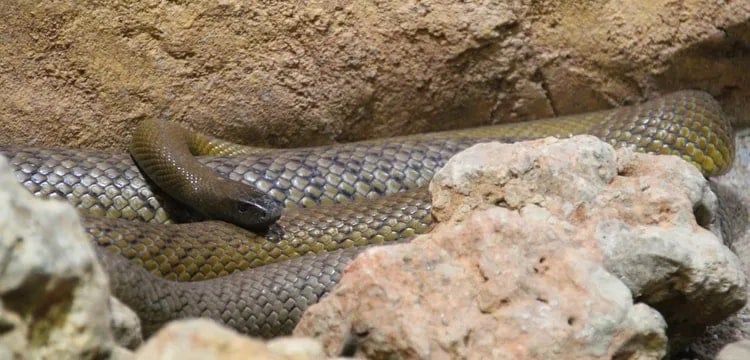
Source: Wikimedia Commons
The inland taipan is considered to be the more venomous snake on earth. One lethal bite from the taipan is said to have enough venom to kill 100 fully grown adults. On top of that, it moves quickly – so have your antivenom ready if you go inland!
Cruising the Outback
When you look at pictures of the Australian outback on the internet, it looks gorgeous – otherworldly even! Romantic types might imagine driving a car through that open landscape, stopping occasionally to get out and wander for a few hours. Although it sounds nice, it’s easier said than done.
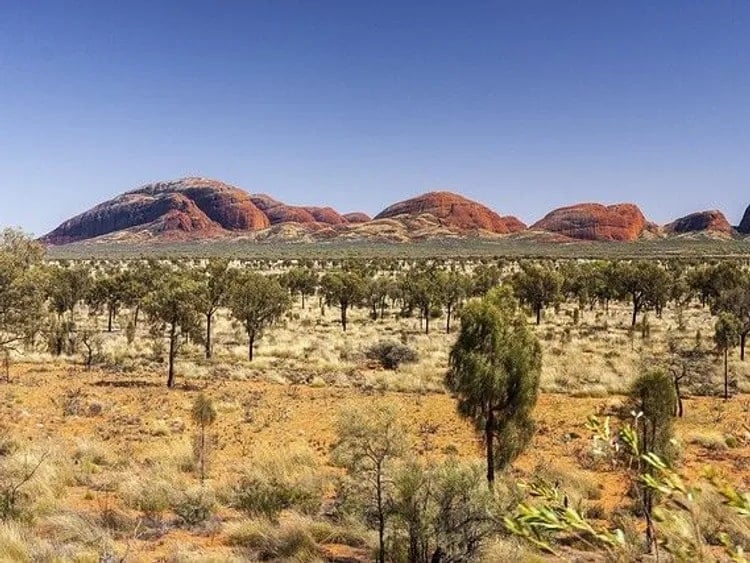
Source: NeilMorrell
Driving through the outback is actually quite difficult. That’s because it requires you to be very well prepared. Alongside the heat, there aren’t many restaurants, gas stations, or hotels. So, come prepared with extra water – and perhaps a satellite phone.
Golf-Ball Sized Octopi
Octopi are known for their intelligence and their ability to change shape, color, and texture right before your eyes. On top of those admirable traits, add the ability to be dangerous. True, not all octopi are dangerous, but the blue-ringed octopus certainly is.
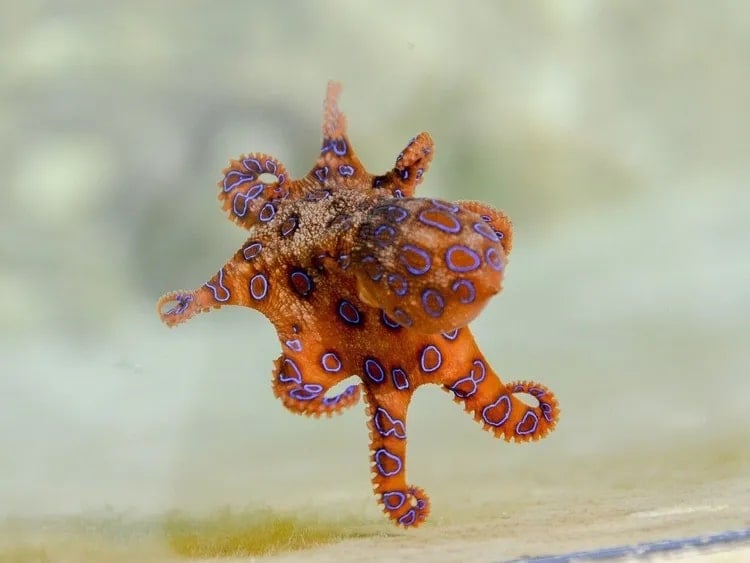
Source: pen_ash
Found in both tide pools and coral reefs, this cute little creature can deliver a bite that’s far from cuddly. In fact, the bite can lead to breathing difficulties and paresthesia. Since they’re only the size of golf balls, they can be difficult to see.
The Australian Paralysis Tick
The name “blue-ringed octopus” doesn’t tell you much about the octopus other than the fact that it has blue rings. In contrast, the name “Australian paralysis tick” tells you everything you need to know about this dangerous creature.
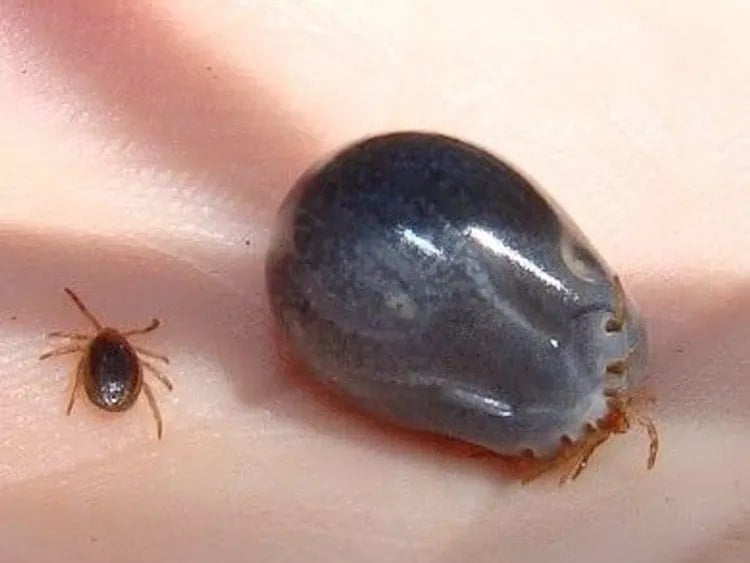
Source: YouTube
When this tick bites you, it injects neurotoxins that cause – you guessed it– paralysis. In addition to that, the tick isn’t a fan of remote places. Instead, it prefers to live along the eastern Australian coastline where plenty of people and pets also live.
The Bull Shark
The bull shark has a reputation to back up its intense-sounding name. They’re known to be aggressive to other fish, sharks, and humans. Unfortunately, they’re also able to live in shallow salt water and shallow freshwater environments. So, if you’re swimming, scuba diving, or surfing in Australia, you may come face to face.
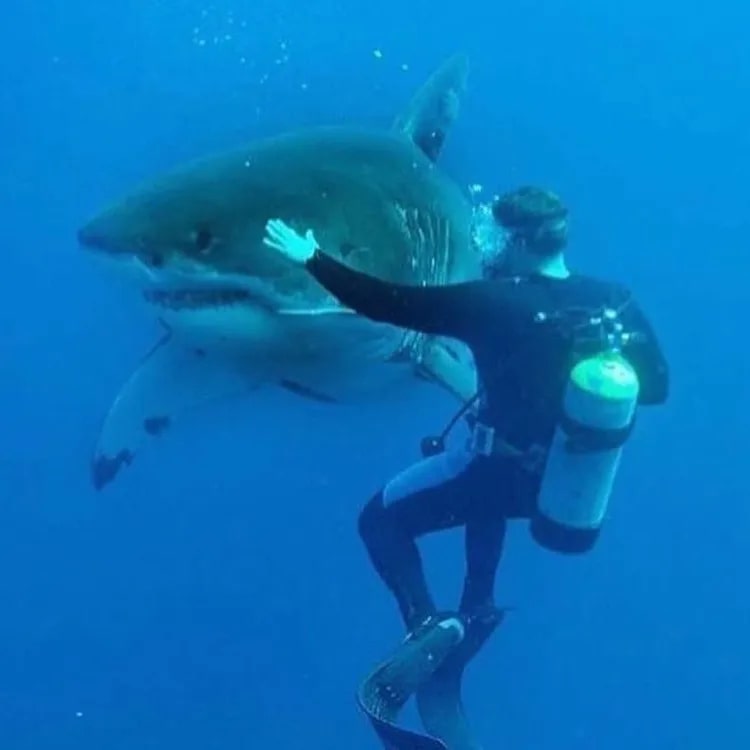
Source: Instagram
An estimated 500 or so bull sharks call the Brisbane river home – which is why there are so many close-to-shore attacks in the area. Although highly rare, they have also been seen making their way through flooded streets!
The Coastal Taipan
We met the inland taipan above. The coastal taipan is its deadly cousin and the third most venomous snake on earth. That means that Australia has the top three deadliest snakes on land: the inland taipan, the eastern brown snake, and the coastal taipan. Yikes!
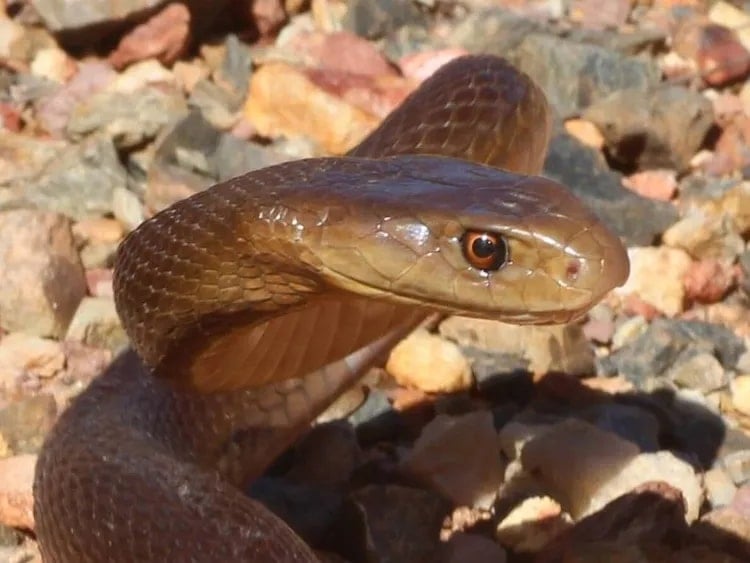
Source: Instagram
This taipan is found on Australia’s northern and eastern coasts. Although it’s not generally aggressive, it will lash out at humans if it feels threatened. The fact that they can grow to 6.6 feet makes that possibility extra scary.
The Yellow-Bellied Sea Snakes
Australia has a way of surprising you no matter what. It seems like having the top three deadliest land snakes wasn’t enough for Australia, so it also threw in a few deadly sea snakes for good measure.
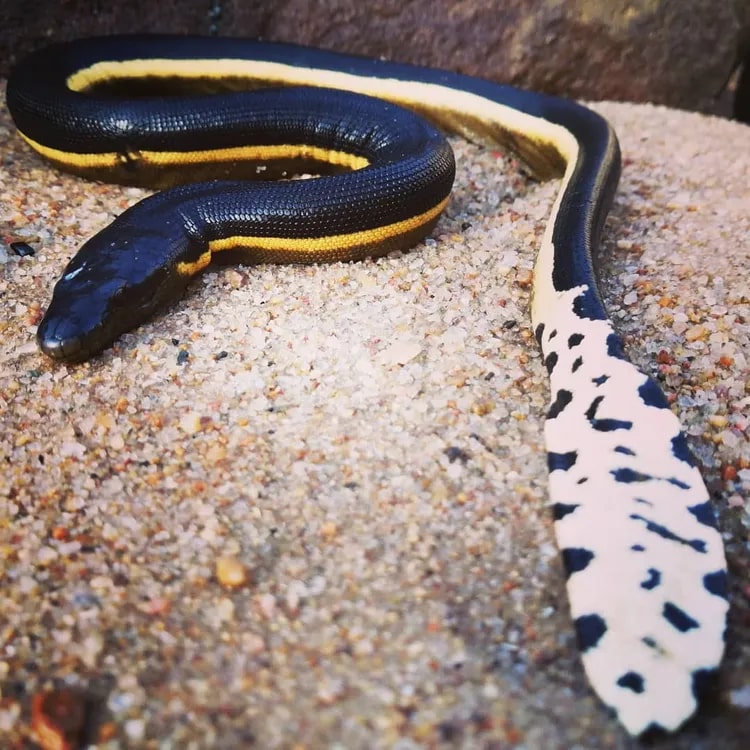
Source: Instagram
The yellow-bellied sea snake is a big fan of the tropical oceans near Australia’s southwestern coast. They live their entire lives there. If you are unfortunate enough to meet one, watch out, because a bite could lead to cardiac arrest and destroyed kidneys. Head for the hospital!
Portuguese Man o' Wars
The Portuguese man o’ war reaches far beyond the shores of Portugal. It’s also commonly found on the east coast of Australia. Not only is it commonly found, but it’s commonly the cause of painful stings during the summer months. In fact, up to 10,000 stings happen yearly!

Source: Instagram
Luckily, most of these aren’t fatal. However, they’re insanely painful and can cause allergic reactions that affect breathing. Although common in Australia, they’re profoundly unique in nature – they’re the only species in the Physalia genus.
The Toxic Toadfish
Although the smooth toadfish may not look too dangerous on the outside (it doesn’t have any scales or stingers), looks can be deceiving. That’s because the smooth toadfish flesh is incredibly poisonous.
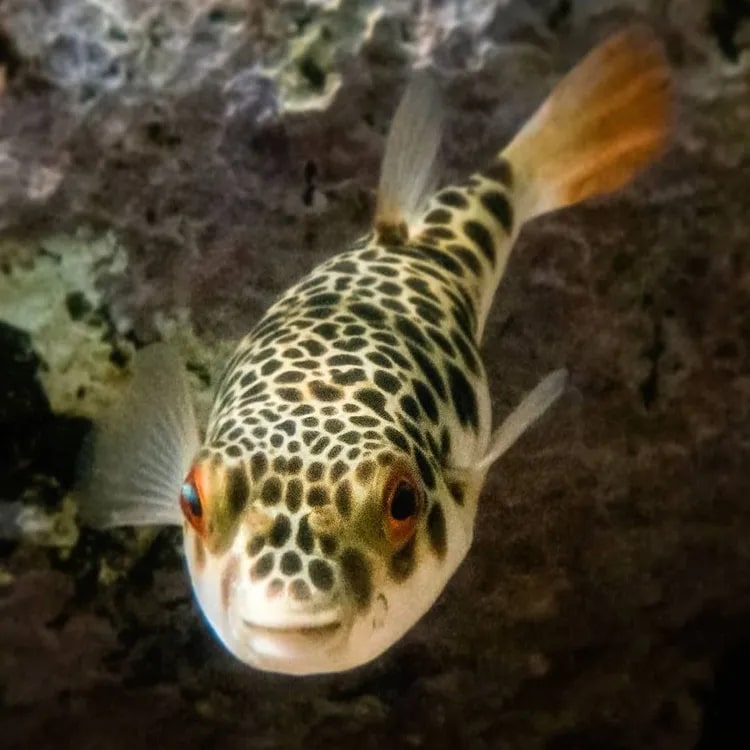
Source: Instagram
Mostly found in southeastern Australia, these fish are well-known to take a bite out of the bait on a fish hook. If taken home and cooked up for dinner, the toxic flesh will cause it to be your last dinner. Effects from eating them include a tingling and numbness, loss of muscle control and speech, and eventually death.
Textile Cone Snails
The Textile Cone Snail has a wholesome name that might make you want to pick it up for a pat or two. That would be a mistake. Despite its neutral name and colorful shell, this snail packs quite a venomous punch.
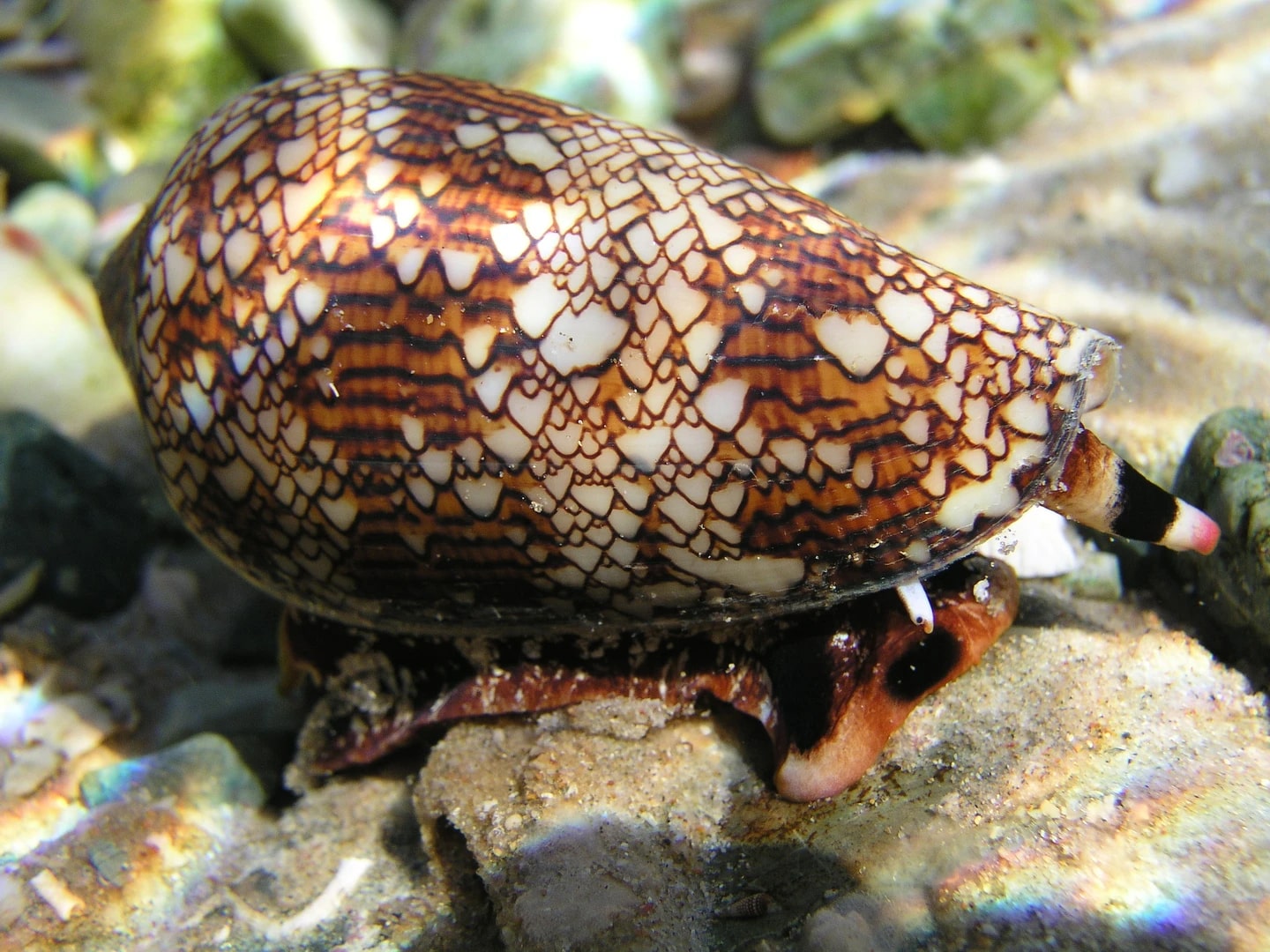
timgori.pw
Found in Australian waters, the snail uses harpoon-like teeth to inject a special kind of venom called a conotoxin into their prey. Then, they eat up. The microscopic needles they use to inject the venom can also pierce human skin – and kill up to 60 adults in one blow!
Mouse Spiders
The mouse spider spends most of its time in burrows but occasionally wanders into the odd suburban backyard. If it does, watch out because these spiders are far deadlier than any mouse. In fact, their venom is on par with the notorious funnel-web spider we saw before.
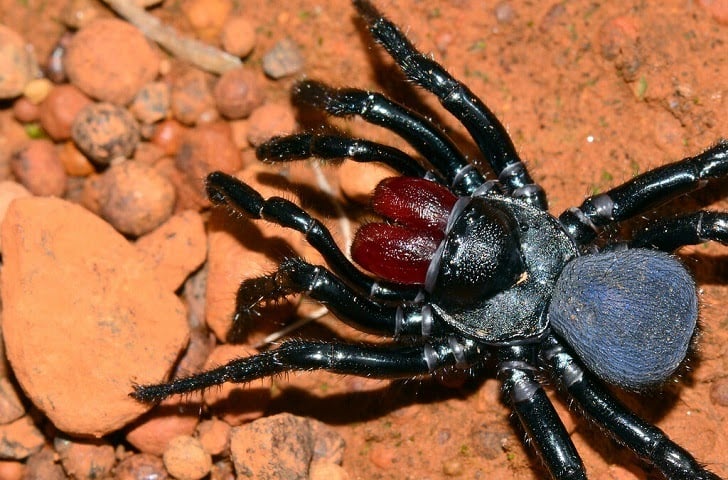
theculturetrip.com
Although they live in nearly every corner of Australia, they aren’t known to attack people and their bites haven’t been connected to any deaths. That’s largely due to the fact that they keep to themselves and are easy to spot in the daytime.
Tiger Snakes
The tiger snake has two main things in common with tigers. First, they are striped. Second, they’re deadly. Stripes run along their entire body, although the precise color and pattern can change quite a bit. Their deadliness comes in the form of a neurotoxic venom.
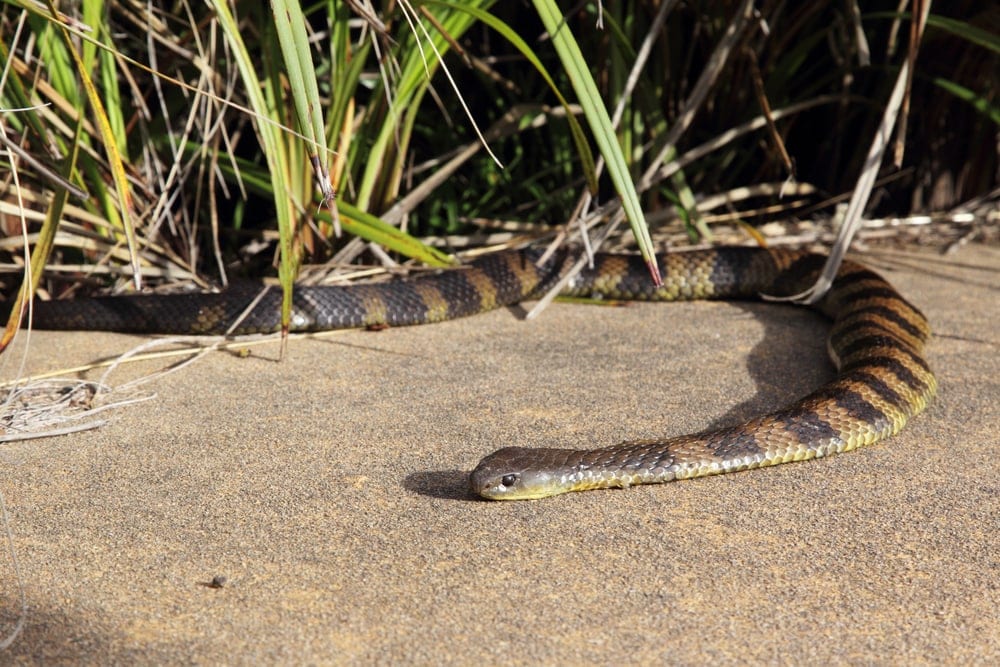
world-note.com
Bites, if left untreated, can prove fatal around 50% of the time. That’s not good odds. So, if you’re in southern Australian, Tasmania, or the Bass Strait islands, keep your eyes peeled. Also, don’t cause them any unnecessary harm – they’re a protected species.
Common Death Adder
It takes less than 0.15 seconds for the common death adder to strike – making them one of the fastest strikers in the world. With long fangs and a broad triangular head, they’re relatively easy to identify. Like most snakes, they want to be left alone.
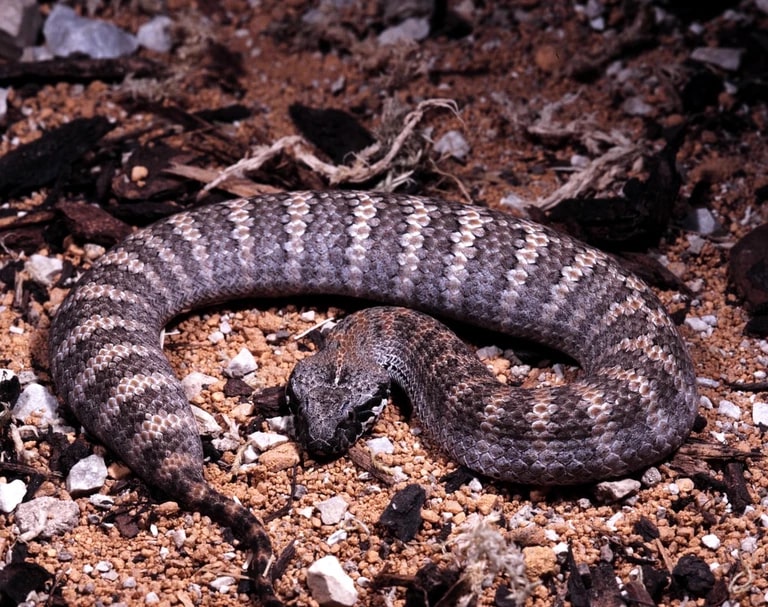
kompas.com
If the common death adder feels threatened, it will completely freeze and then try to blend in with its environment. That environment ranges from the coasts of Western Australia to the forests of Queensland.
Mulga Snakes
The mulga snake is not only venomous, it’s long and venomous. As if that wasn’t enough, it’s also found in nearly all Australian states. So, putting it all together, this 12-foot venomous snake is incredibly common. Yikes!
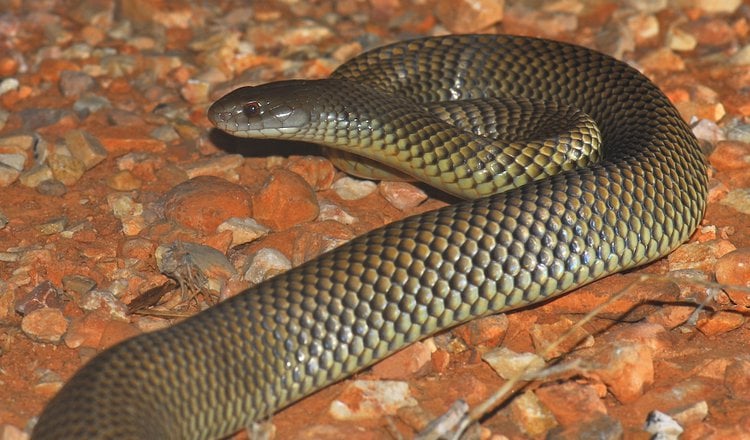
Smacdonald/WikiCommons
Some call it the King Brown snake even though it’s part of a genus that literally means “black snakes.” Regardless of what they’re called, you don’t want to mess with them. Although the actual bite is relatively weak, mulga snakes latch on and stay on while injecting 150 milligrams of venom.
